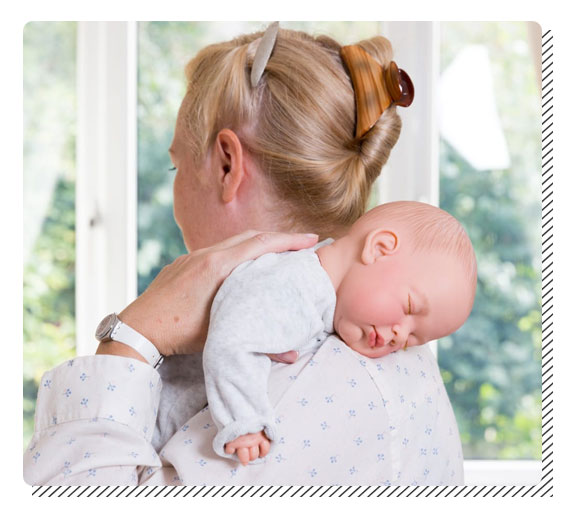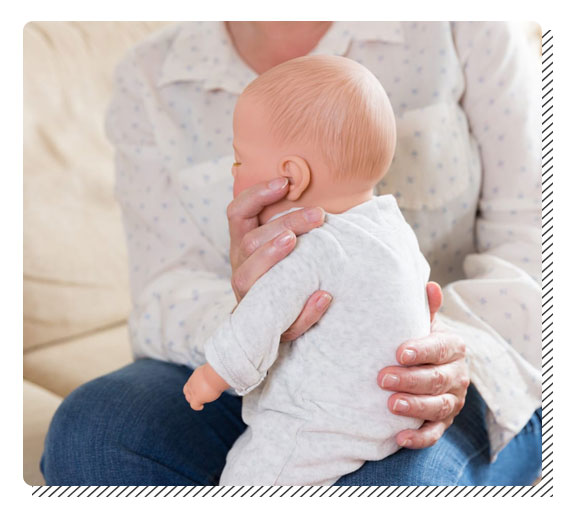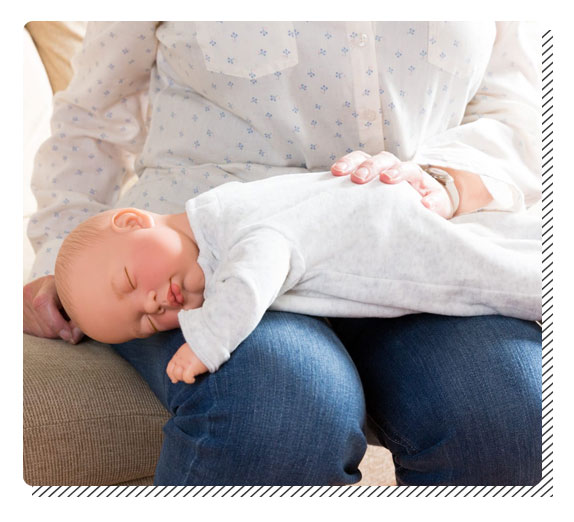Best Way to Wind a Baby

Burping or winding your baby is an essential component of a baby’s feeding schedule. Air bubbles might be stuck in your baby’s stomach as they swallow, causing pain. So, winding enables your infant to ease the pain by removing some of the gassiness. It also aids in the prevention of spitting up.
Breastfeeding is a skill that mothers master over time. It takes some time to figure out which feeding and winding positions are the most comfortable for your baby. Since there are no ‘right’ positions here, try them all out and know which one suits you and your little one best.
Some babies burp easily, whereas a lot of others require help. This article will let us learn how to wind a newborn and different baby winding positions, along with some winding baby tips and the best way to wind a baby.
Why is it important to Wind a Baby?
One of the essential components of a mother’s feeding routine is winding a newborn. It is because, in addition to breast milk or baby formula, your baby may ingest some air bubbles when feeding.
These air bubbles become stuck in your baby’s stomach, making them exceedingly uncomfortable. Winding a newborn during or after you have fed them relieves this discomfort by freeing the trapped “wind.”
How to Wind a Newborn
Because babies can’t usually burp on their own, winding a baby is crucial for feeding. Since trapped air in their stomach might be uncomfortable, understanding a few methods on how to wind a newborn can be quite beneficial. You may need to experiment with a few different postures before determining the ideal method to wind your baby. As a general rule, keep in mind:
- Maintain a straight stomach and spine for your baby.
- Support their neck and head
- Gently massage their backs
Baby Winding Positions
Support your baby’s neck & head, and stroke or pat their back gently. Make sure their belly and back are upright (not curled up). Winding a newborn doesn’t have to take long; a few minutes should be enough for it.
Winding a baby can be done in a variety of ways. Try them all and discover which one works best for your baby, or simply combine them:
1. Over your Shoulder

- Best way to wind a baby is by supporting your baby’s head and shoulder area with one hand while softly rubbing and patting their back with the other.
- Keep your baby’s chin on any side of your shoulder.
- It can be beneficial to take a stroll while doing this.
2. Sitting on your Lap

- Another way of winding a newborn is by sitting the baby on your lap with his/her back facing you.
- Without putting pressure on the baby’s throat area, gently put your palm flat on the baby’s chest along with supporting their jaw and chin.
- Slightly lean your baby forward with your other hand and rub/pat their back gently.
3. Lying Across your Lap

- This technique of winding a newborn involves lying your baby across your lap with their facing downwards.
- Just like it is mentioned in the above technique, support your baby’s list.
- Then, utilize your free hand to rub/pat your newborn’s back gently.
Newborns may need to stop feeding many times to burp to avoid the accumulation of gas bubbles in their tummies. Try winding your baby every time you switch breasts if you’re nursing or every 2 or 3 ounces if you’re bottle-feeding. Additionally, the techniques for winding a sleeping newborn infant are the same as burping an awake newborn baby—use more gentle motions.
When to Burp Your Baby?
Babies have tiny tummies that tend to fill up quickly. Burping them while they eat reduces the accumulation of unpleasant trapped wind. Babies usually have a built-in appetite regulator that helps them sense when they are full. They’ll send you the message through a variety of physical and vocal signs once they are full.
There are no set guidelines for when to wind baby; some babies require burping during their meal, while others require burping afterward. Look for cues – if your baby appears uneasy when eating, take a small burp break. Wait till they’ve done feeding if they seem OK while doing so.
Every infant is unique, and the same is true in releasing trapped wind as well. The following are examples of signs of trapped wind:
- Crying
- Baby arching back
- Legs are pulled up towards the stomach.
- Fists clenched
You’ll probably acquire a good sense of when and how often your infant requires winding gradually and before too long. Then, you won’t even have to look for symptoms of trapped wind because it’ll be second nature to you.
Winding a newborn more frequently during feeds may help relieve symptoms if your baby has Grunting Baby Syndrome or Gastro-oesophageal reflux disorder (GORD) or is prone to reflux. Feeding and winding your baby in an upright posture, and keeping them upright for as long as possible after feeding, can also assist. However, few symptoms of reflux are:
- Milk is frequently brought up during or shortly after feeding.
- Coughing or hiccupping while feeding
- Following burping or eating, gulping or swallowing occurs.
Wind your baby only if they need it. If your baby falls asleep or is content while or after feeding, there is no winding requirement. If your baby falls asleep during a night feed but wakes up repeatedly due to wind, try sitting her up and gently pat her back when she falls asleep.
Your infant will learn to suck more effectively as they grow older, ingesting less air. As a result, you may not need to burp her as frequently. After a meal, you’ll usually have a perfect idea whether she needs a burp or not.
What if the Baby Won’t Burp?
Not all infants wind whenever you try winding them, and some have an easier time releasing all that stored air than others. If you can’t get your baby’s trapped wind to come up with stroking or patting, there are alternative options.
If your baby is still crying, arching their back, bringing legs towards the stomach, or clenched fists, try lying them down on their back and softly rubbing their belly. You can also try moving your baby’s legs back and forth as if they were riding a bicycle.
You might help your baby relax by giving them a warm bath and then giving her a nice belly massage. This can assist in calming your infant while also releasing trapped wind. If one of these winding baby tips doesn’t work, consult with your health visitor; they’ll be able to recommend the best course of action.
Our Advice
Keep in mind that while burps and spit-up are perfectly natural, projectile vomiting is not. If your newborn is vomiting up significant volumes of food after feedings, check our guide on Baby Vomiting Mucus: Causes & Prevention or see your pediatrician to rule out any other possibilities.
Other symptoms should not usually accompany gassiness. But burping may be a symptom of something else going on if your baby has a temperature over 100.4 degrees F, bloody stools, diarrhea, or is so irritable that he can’t be put down.
Winding a baby is a common parenting practice, and some parents may be concerned if their baby fails to burp. While it is OK to continue burping a baby, there is typically no reason to do so if the infant refuses to burp.
In certain situations, parents can completely cease this practice without harming their babies. If your baby consistently has gas or they spit up now and then, you should seek medical advice from a pediatrician.

Laura is a trained primary teacher who takes a profound liking in interacting with and bringing out the best in children. She is also an ISSA certified pediatrician with an extensive practice of over 12 years. Laura comprehends the needs of infants and now compresses her expertise into writing thorough parenting guides to aid new parents.






